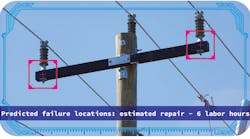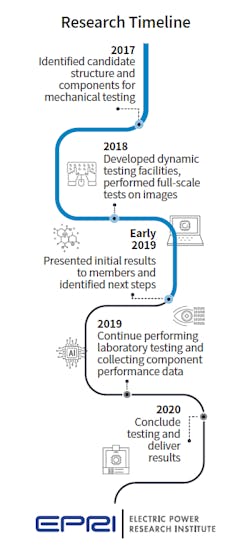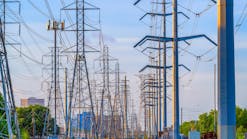Industry Challenge
Extreme weather and storms pose a significant challenge for distribution systems. High winds, ice loads, and falling trees can stress structures beyond their design limits. Historically, distribution system designs have primarily focused on meeting NESC requirements, selecting components that are generally long-lasting, and minimizing capital costs.
Utilities are now making resiliency a higher priority when designing structures. This translates to structures that are more resistant to storm damage and facilitate quick repair and restoration. However, the performance of overhead structures under storm conditions is difficult to predict. Impact loads from falling trees and wind gusts can affect systems differently than steady wind and ice loads. There has been little or no data available to help line designers determine how to accommodate these unpredictable loads.
EPRI’s Response
EPRI is currently researching the mechanical performance of overhead hardware and assemblies during extreme weather events. EPRI has developed specialized test facilities to determine how line hardware and structures perform under these loads, including a full-scale test site to simulate mid-span tree strikes on complete structures built to utility specifications.
Using the test results, EPRI is helping utilities better understand how strategic system design and hardware selection can shift a structure’s failure location to facilitate faster repair. For example, one EPRI study found that it takes an average of 35 labor hours to repair a three-phase pole that includes other line equipment (such as transformers). By comparison, replacing a broken crossarm required an average of 6 labor hours. By shifting the failure location from the pole to the crossarm, utilities could reduce repair time by an average of 29 labor hours.
Progress, Results & Next Steps
EPRI has performed 14 full-scale tests, providing data for four utilities to help improve their structure resiliency. Data have also been collected on several components, including EPRI has performed 14 full-wooden and fiberglass crossarms. EPRI is aggregating the results from individual component and subassembly tests so utilities can have more confidence in standards without having to perform a full-scale test when standards change.
EPRI is continuing testing through 2019. EPRI is summarizing the individual utility case studies to show how mechanical coordination can be applied and how it can improve resiliency. The research team is also aggregating the results to provide more general guidance on leading practices for design. The project will also document potential outcomes from changing to a more resilient standard, including changes in structure repair time and whether a down conductor condition could occur.
How to Use the Research
Utilities have implemented construction standards changes based on test results. The full-scale test facility at the EPRI Power Delivery Laboratory in Lenox, Massachusetts, has demonstrated how structures perform under simulated mid-span tree strikes, giving utilities insights into real-world performance of their resilient designs.
How to Get Involved
This collaborative research project benefits from having participants who use different construction approaches and design philosophies. The insights learned from one utility’s equipment benefit the entire collaborative. If you’re interested in examining the performance of your overhead distribution structures, please contact Joe Potvin, [email protected].



